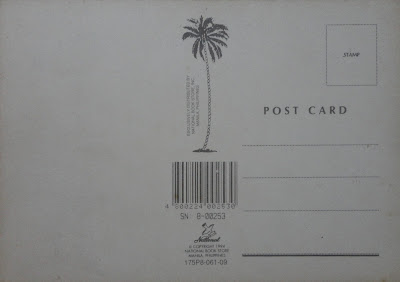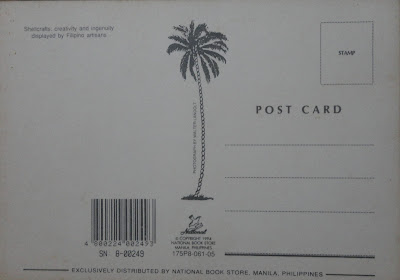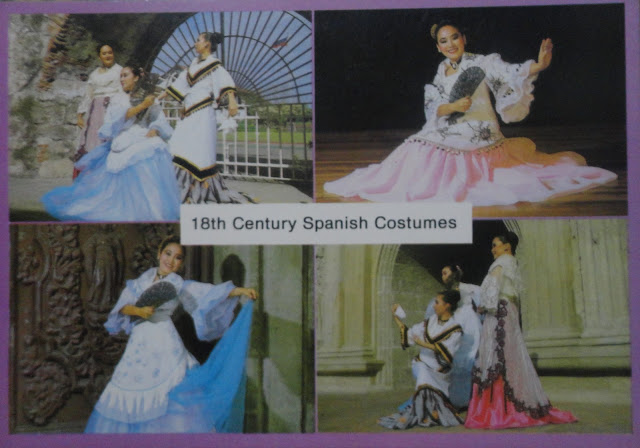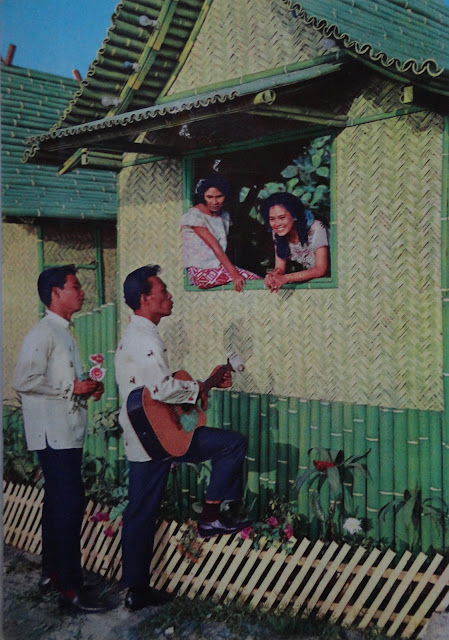Shell Collection in San Fernando
La Union, Philippines
La Union, Philippines
POSTCARD DETAILS:
UnusedSingle View
Size: 4"x5.5"
Publisher: N/A
Distributor: National Book Store (NBS)
Cost: Php1.75
Copyright: 1994
Barcode: 4-800224-002530
Serial Number: 8-00253








